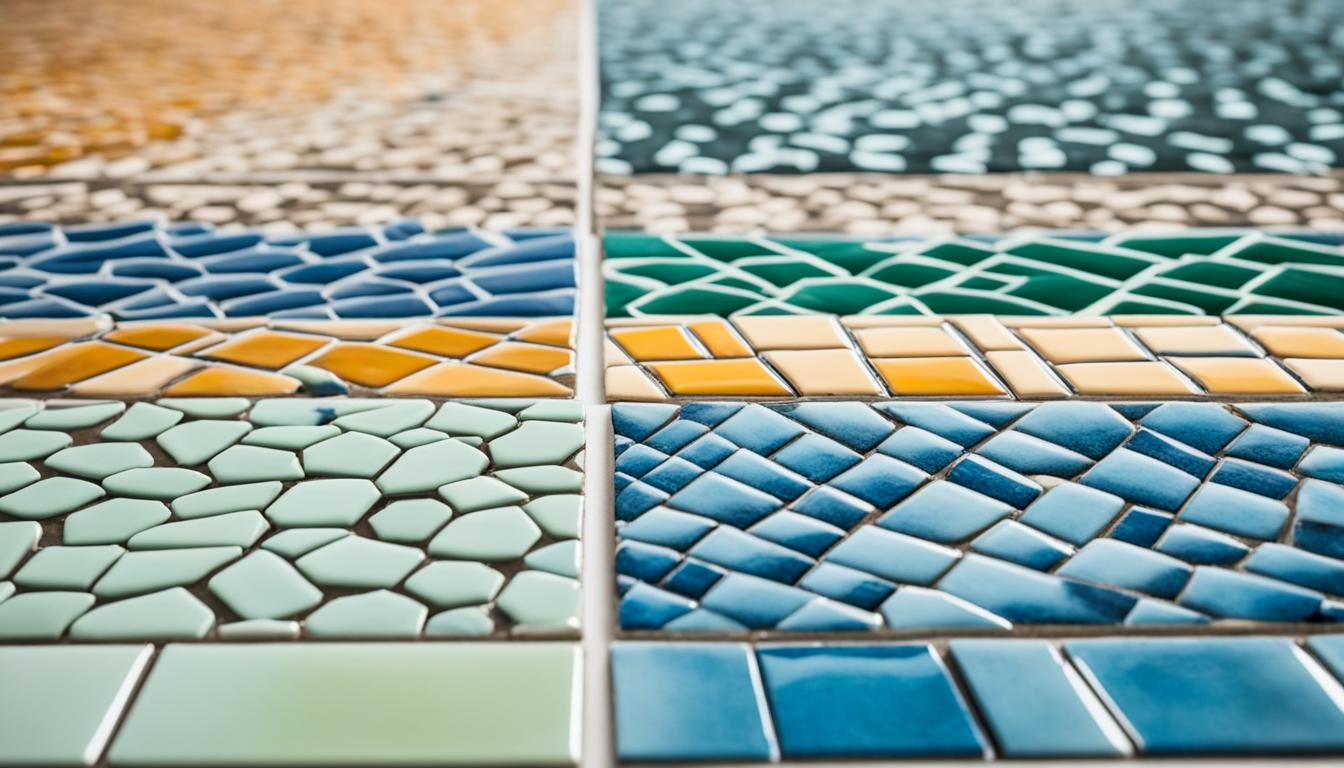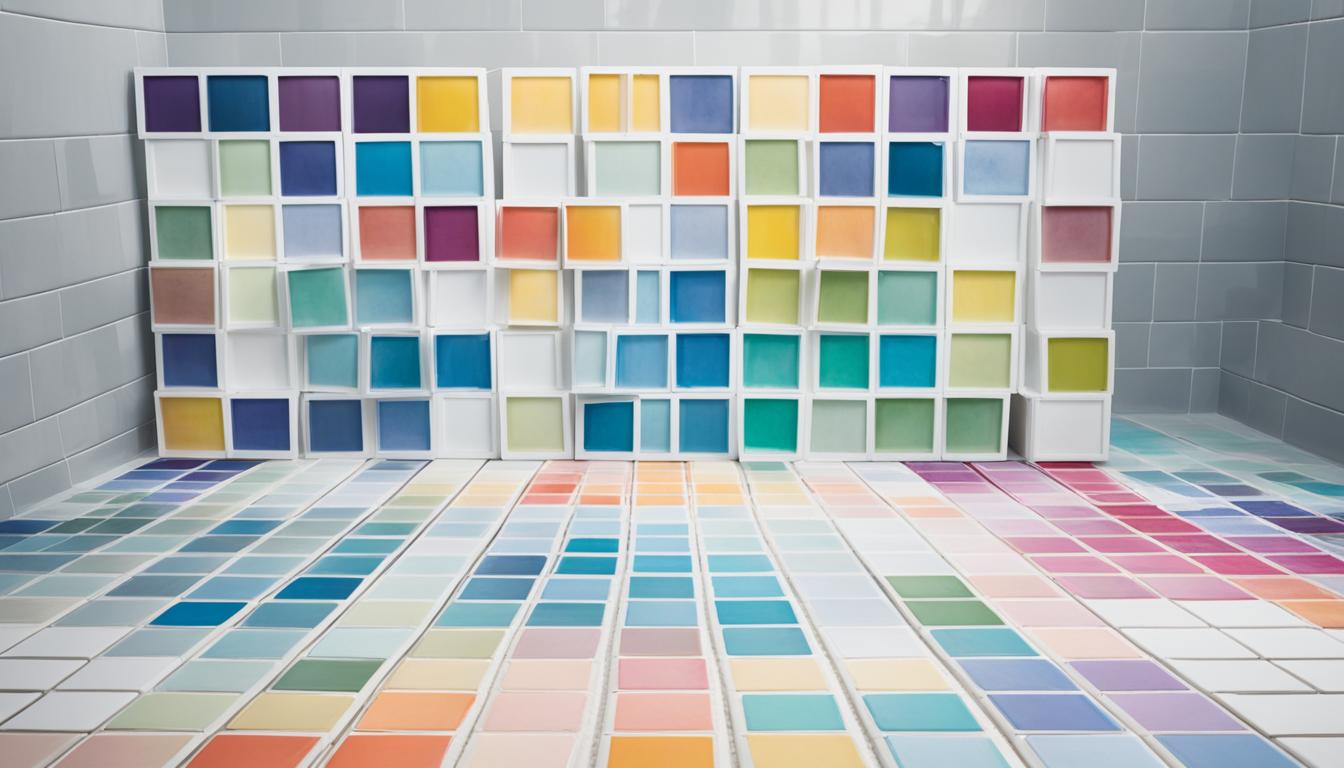Understanding Dye Lots in Tile: Color Consistency
Posted by Mike Belk on Jul 08, 2024

When it comes to ceramic and porcelain tile, getting the color and texture right is crucial for both makers and homeowners. Color variation is a natural part of making tiles, adding depth and interest. In 2001, the Ceramic Tile Distributors Association created a system to help buyers choose the right tiles. This system goes from V1 (Uniform Appearance) to V4 (Substantial Variation), guiding people in picking the right tiles for their floors.
New printing tech lets tiles look like natural stone, with up to 40 different images in one batch. Polished tiles usually show the least color change, but some shade difference is to be expected. Things like the type of clay and the kiln temperatures can cause these small color shifts during making.
When you're redoing your home, knowing about shade variation ratings and choosing the right tiles is key. Whether you want everything to match or you like the look of natural stone, this info can make your flooring projects a success.

Key Takeaways
- The Ceramic Tile Distributors Association introduced a shade variation rating system in 2001.
- Shade variation ratings range from V1 (Uniform Appearance) to V4 (Substantial Variation).
- Modern printing technology allows tiles to mimic natural stone with up to 40 different images per production run.
- Factors such as natural clay composition and kiln temperatures affect the final color and texture of the tiles.
- Understanding shade variation ratings can help you achieve the desired look in your home renovation projects.
What Are Dye Lots in Tile?
In tile installation, knowing about dye lots definition is key. A dye lot means a set of tiles made under the same conditions. They have similar colors and patterns. This idea helps make sure your home improvement looks consistent.
Definition and Importance
Color and size differences between dye lots can change how a tiled area looks. Contractors say even small differences can stand out after grouting. So, having tiles from the same dye lot is crucial for a uniform look. It makes sure the tiles blend well and look like they were installed by pros. Tiles that can vary include ceramic, vinyl, and engineered flooring.

Production Process
Making tiles involves using natural clay and high temperatures. These can cause color and size changes, like differences in firing temperature and ink. Even though makers try to keep things consistent, it's hard to make every batch look the same. Flooring experts suggest checking the tiles before you install them. Mixing tiles from different boxes can also help keep the color even.
Factors Contributing to Color Variation
Understanding why tiles come in different colors is key for anyone wanting great-looking results. We'll look at how the materials and making tiles affect their color.
Natural Variation in Materials
The color of ceramic and porcelain tiles changes because of the natural clay they're made from. These differences in minerals cause color shifts, even within the same batch. Stones like marble and slate also show a lot of color and texture changes because of what's in them. This makes each tile unique, adding a special touch to home designs.
Manufacturing Techniques
Tile makers add color changes to make them look like real stone or wood. They use many images to copy the look of natural stone, making each tile look unique. This gives tiles an artisan feel, fitting well with today's home styles. Also, different production batches can change the color and feel of tiles. Using tiles from the same batch keeps the look consistent.
Tiles can have low, medium, or high color changes, each giving a different look. Low variation tiles are sleek and perfect for certain designs. Medium and high variation tiles offer a richer look, great for eclectic styles.
So, both the materials and how tiles are made play big roles in their colors. This variety helps meet many home décor needs.
Understanding Shade Variation Ratings
The shade variation rating system is key for the Ceramic Tile Distributors Association (CTDA). It puts tiles into four levels to help buyers know what color and texture changes to expect. These levels are:
CTDA Rating System
The CTDA rating system is a detailed guide to tile variation:
- V1: Uniform Appearance - Tiles from the same batch look very similar with few differences.
- V2: Slight Variation - You can see slight texture and pattern differences, but colors stay similar.
- V3: Moderate Variation - Colors on one tile show what to expect on others, but color amounts can change a lot.
- V4: Substantial Variation - Each tile's color can be quite different, making the final look unique.
When planning a tile project, knowing these V1-V4 ratings is key to getting the look you want. Using the right installation strategy can make the tile look even better, making sure it looks great together.
Visual Guide to Shade Variation
Visual aids help a lot in understanding how tiles might vary. Six different photos on each product page show the shade variation of the tile style. This helps with planning your tile design and avoids surprises.
It's also smart to buy a full box or at least four pieces of natural stone from the same batch to see what it looks like. This way, a small sample won't mislead you. It follows CTDA guidelines to make sure customers are happy.
| Rating | Description | Application |
|---|---|---|
| V1 | Uniform Appearance | Best for areas needing little variation, like small bathrooms or backsplashes |
| V2 | Slight Variation | Good for kitchens and places with moderate foot traffic, adding a subtle texture |
| V3 | Moderate Variation | Great for busy areas and feature walls that look good with different tiles |
| V4 | Substantial Variation | Best for artistic projects and big spaces where a unique look is wanted |
Using the shade variation rating system and CTDA guidelines helps you make better choices for your tile project. Whether you want a uniform or varied look, planning and checking these ratings are key steps.
How to Ensure Color Consistency in Your Tile Projects
To get consistent colors in your tile projects, plan well and follow best renovation practices. The color of grout can change based on how we see color, the light, the angle we view it from, and the type of tile. Keep these factors in mind for a uniform look in your tiles.
When buying tiles, get a full box or several pieces of natural stone to see the true color. Tiles can absorb different amounts of moisture, like non-vitreous tiles absorbing more than semi-vitreous ones. Knowing this helps in choosing and placing tiles for consistency.
Look at many photos of the tile online before buying to check for color changes. V1-rated tiles are best for little color change, while V2 to V4 offer more variety. Installing tiles right is key to avoid problems like cracked tiles and safety issues, and using rectified edges helps with tight grout lines.
Grout color can look uneven if the mortar isn't cleaned well during installation. Things like paint overspray, foot traffic, and weather can also change grout color. So, arrange the tiles first to see the color differences and order enough from the same batch to match.
Know the price of tiles before you start since prices vary, with some sold by piece or box. Also, buy 10% more tile than you think you'll need to handle dye lot changes and have enough for your project.
- Purchase full boxes or multiple pieces to accurately assess the product's look
- Examine multiple photographs for shade variation when buying online
- Select V1-rated products for uniformity or V2 to V4-rated options for more variation
- Lay out tiles prior to installation to assess varying shades
- Order extra materials from the same dye lot to avoid discrepancies

Common Challenges and Solutions
Tile installation often faces challenges like tile batch variations and pattern repetition. These issues can make it hard to keep the look consistent across the whole project. We'll look into these problems and offer solutions to help you overcome them.
Dealing with Batch Differences
Tile batch differences can lead to color and texture variations. This happens because tiles from different production runs may look slightly different. To avoid this, it's best to order all your tiles from the same batch. This helps keep the look consistent.
High-end porcelain tiles are made to have less color and pattern variation. This is unlike cheaper tiles that might show more repetition, making some areas stand out.
Mitigating Visible Repetition
Pattern repetition can also detract from the look of a tiled area. For large spaces, it's important to avoid repeating patterns too often. Premium porcelain tiles usually don't repeat patterns in areas up to 1000 square feet. But cheaper tiles might repeat more often.
To prevent this, have the installer lay out and mix the tiles before putting them in. This way, they can spread out different shades and patterns evenly. This keeps the look consistent and hides any pattern repetition.
Planning and choosing high-quality tiles can make your installation look great and last longer. Taking steps like using gentle cleaners and resealing grout yearly will keep your tiles looking good for years.
Knowing how to handle tile batch variations and pattern repetition is crucial for a beautiful and consistent tile job.
Tile Selection Tips Using Dye Lots in Tile
Choosing the right shade and ordering from the same dye lot is key for tile projects. It's important for keeping the look consistent and planning your home renovation well.
Choosing the Right Shade Variation
When picking tiles, it's crucial to select the right shade variation. Ratings like V1 to V4 show how consistent the color, texture, and pattern are. A V1-rated product means the color is very consistent.
As you go from V2 to V4, the color variation grows. This adds more life to your space. This choice affects how your renovation looks together.
Ordering from the Same Dye Lot
It's important to keep the color consistent in your tile project. Buying extra tiles from the same dye lot helps with waste and repairs. This way, you avoid color mismatches if the dye lot changes.
Tile styles can be discontinued, so having more tiles from the same batch is smart for future needs. For tricky patterns or rooms with odd shapes, add more extra tiles. Aim for 15% to 20% more to cover cuts and mistakes.
By using this guide, focusing on matching dye lots, and keeping consistency, your project will look as you imagined. This makes planning your renovation easier and keeps the look beautiful for years.
Conclusion
Understanding dye lots and shade variations is key for a unified look in tile projects. Porcelain tiles are great for floors because they're tough and easy to keep clean, starting at $2 per square foot. It's also important to think about grout types. Epoxy grout is perfect for busy areas like kitchens and bathrooms because it resists stains well. Unsanded grout is better for walls and delicate tiles like glass because it's less noticeable.
Choosing the right tiles is essential for a successful project. Ceramics offer more color options for walls because they're a bit more porous than porcelain. Using patterns like herringbone or grid can make a room more interesting. The type of grout and tile grade, like the V2 used in kitchens, greatly affects the look.
Picking tiles carefully means your project will look good for a long time. Working with professionals helps because they know how to handle color matching and tile placement. This ensures your home looks great and reflects your style. By understanding dye lots and shade variations, homeowners can make renovations that look beautiful and work well.
FAQ
What is shade variation in ceramic and porcelain tile?
Shade variation means the colors and patterns in ceramic and porcelain tiles can differ. This happens because of the natural clay and kiln temperatures used. It's a natural part of making tiles, not a flaw. It's often made to look like stone or wood.
How does the CTDA shade variation rating system work?
The Ceramic Tile Distributors Association (CTDA) has a rating system for tile shade variation. It ranges from V1 (very uniform) to V4 (a lot of variation). This helps buyers pick the right tile for their look.
Why is it essential to consider dye lots when purchasing tiles?
Dye lots mean groups of tiles made under similar conditions. They have the same color and pattern. It's important for keeping the color the same in a tiling project. This avoids color differences that stand out.
What causes color variation in ceramic and porcelain tiles?
The natural clay and advanced making processes cause color variation in tiles. Manufacturers add different images to make each tile unique and artistic. This gives a natural look similar to stone.
How can I ensure color consistency in my tile project?
To keep colors the same, buy tiles from the same dye lot. Also, lay out the tiles before putting them in to check the variation. It's smart to get extra tiles for cuts and repairs to keep the look even.
What are common challenges in tile installation, and how can they be addressed?
Issues include batch differences and pattern repetition. To fix this, get all tiles from the same batch. Also, lay out the tiles before installing to spread the shades and patterns evenly.
What tips can help in selecting the right tile shade variation?
Think about how much shade variation you want. V1 tiles are very uniform, while V2 to V4 have more variation. Look at CTDA ratings and pictures to choose the right look for your design.
How can batch differences impact a tiling project?
Batch differences can make tiles look different, like cookies from different days. Getting all tiles from the same dye lot keeps the color the same and avoids these issues.
Why should I review multiple photographs when purchasing tiles online?
Looking at many pictures helps you see the tile's shade variation. It makes sure the tiles will look good in your space. This is key for natural and varied tiles to see how they'll look installed.
Is it necessary to lay out tiles before installation?
Yes, laying out tiles first lets you see the variation. It helps spread the tiles out evenly for a nice look.



